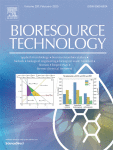|
Authors
Fang, Wei; Zhang, Xuedong; Zhang, Panyue; Carol Morera, Xavier ; van Lier, Jules B.; Spanjers, Henri ; van Lier, Jules B.; Spanjers, Henri
|
Abstract
White rot fungi using P. sajor-caju and T. versicolor was examined to pretreat raw champost (lignin-rich) and oyster champost (cellulose-rich) for enhancement of fermentative volatile fatty acid (VFA) production. Results showed that the efficiency of pretreatment and VFA production was influenced by the fungal strains and substrates. P. sajor-caju pretreatment showed preferential lignin degradation on raw champost and obtained the maximum VFA yield (203 ± 9 mg COD/g VSadded), which increased by 60% and 74% compared to that of control and unpretreated champost, respectively. For cellulose-rich oyster champost, however, fungal pretreatment decreased VFA yield compared to unpretreated champost. Further mechanisms analysis demonstrated the two strains grow and secreted ligninolytic enzymes, which substantially influenced the characteristics of two champosts such as cellulose/lignin ratio and morphology in different extents. P. sajor-caju was highly efficient to lignin-rich champost on selectively degrading lignin and further enhancing digestibility such as VFA production.
|

WoS
Scopus
Altmetrics
  
|
